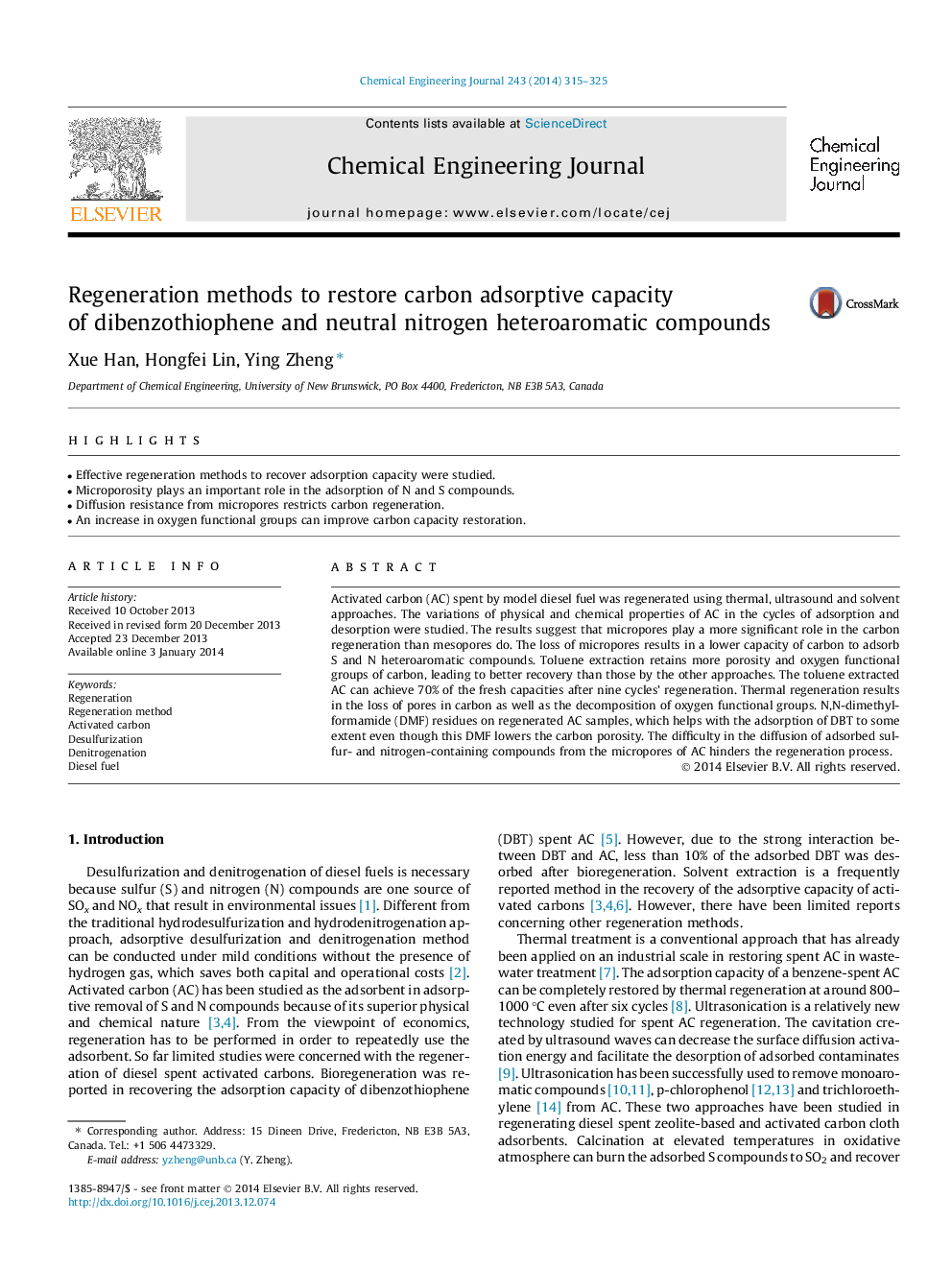| کد مقاله | کد نشریه | سال انتشار | مقاله انگلیسی | نسخه تمام متن |
|---|---|---|---|---|
| 147876 | 456401 | 2014 | 11 صفحه PDF | دانلود رایگان |
• Effective regeneration methods to recover adsorption capacity were studied.
• Microporosity plays an important role in the adsorption of N and S compounds.
• Diffusion resistance from micropores restricts carbon regeneration.
• An increase in oxygen functional groups can improve carbon capacity restoration.
Activated carbon (AC) spent by model diesel fuel was regenerated using thermal, ultrasound and solvent approaches. The variations of physical and chemical properties of AC in the cycles of adsorption and desorption were studied. The results suggest that micropores play a more significant role in the carbon regeneration than mesopores do. The loss of micropores results in a lower capacity of carbon to adsorb S and N heteroaromatic compounds. Toluene extraction retains more porosity and oxygen functional groups of carbon, leading to better recovery than those by the other approaches. The toluene extracted AC can achieve 70% of the fresh capacities after nine cycles’ regeneration. Thermal regeneration results in the loss of pores in carbon as well as the decomposition of oxygen functional groups. N,N-dimethylformamide (DMF) residues on regenerated AC samples, which helps with the adsorption of DBT to some extent even though this DMF lowers the carbon porosity. The difficulty in the diffusion of adsorbed sulfur- and nitrogen-containing compounds from the micropores of AC hinders the regeneration process.
Journal: Chemical Engineering Journal - Volume 243, 1 May 2014, Pages 315–325
